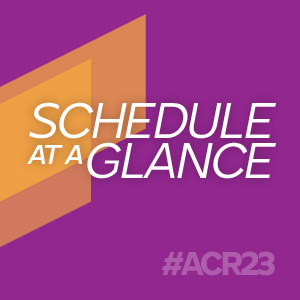Poster Session A
Rheumatoid arthritis (RA)
Session: (0380–0422) RA – Diagnosis, Manifestations, and Outcomes Poster I
0407: Meteorological Conditions Contribute to the Joint Ultrasound Findings in Patients with Rheumatoid Arthritis: Kyushu Multicenter Rheumatoid Arthritis Ultrasound Prospective Observational Cohort Study
Sunday, November 12, 2023
9:00 AM - 11:00 AM PT
Location: Poster Hall
Abstract Poster Presenter(s)
Masataka Umeda1, Yushiro Endo2, Tohru Michitsuji3, Ayako Nishino3, Shin-ya Kawashiri3, Shinpei Morimoto4, Masahiko Tuboi5, Naoki Matsuoka5, Keita Fujikawa6, Akinari Mizokami7, Yujiro Arinobu8, Tomomi Tsuru9, Hirokazu Takaoka10, Tamami Yoshitama11, Tomoyuki Asano12, Jun Ishizaki13 and Atsushi Kawakami14, 1Beth Israel Deaconess Medical Center, Harvard Medical School, Boston, MA, 2Department of Immunology and Rheumatology, Division of Advanced Preventive Medical Sciences, Nagasaki University, Nagasaki, Japan, 3Department of Immunology and Rheumatology, Division of Advanced Preventive Medical Sciences, Nagasaki University Graduate School of Medical Sciences, Nagasaki, Japan, 4Innovation Platform & Office for Precision Medicine, Graduate School of Biomedical Sciences, Nagasaki University, Nagasaki, Japan, 5Nagasaki Medical Hospital of Rheumatology, Nagasaki, Japan, 6Japan Community Healthcare Organization, Isahaya General Hospital, Isahaya, Japan, 7Isahaya General Hospital, Isahaya, Japan, 8Department of Clinical Immunology and Rheumatology, Kyushu University Hospital, Fukuoka, Japan, 9Department of Rheumatology, Med.Co. LTA PS Clinic, Fukuoka, Japan, 10Section of Internal Medicine and Rheumatology, Kumamoto Shinto General Hospital, Kumamoto, Japan, 11Yoshitama Clinic for Rheumatic Diseases, Kirishima, Japan, 12Fukushima Medical University, Fukushima, Japan, 13Department of Hematology, Clinical Immunology and Infectious Diseases Ehime University Graduate School of Medicine, Toon, Japan, 14Nagasaki University, Nagasaki, Japan
Background/Purpose: Various environmental factors are involved in the pathogenesis of rheumatoid arthritis (RA), and meteorological conditions such as temperature and atmospheric pressure have also been reported to affect its symptoms. However, studies evaluating its influence based on objective imaging studies are lacking. This study analyzed the correlation between joint ultrasonography scores and meteorological conditions in a multicenter RA cohort to determine whether meteorological conditions contribute to the joint ultrasound findings of RA.
Methods: The present study was analyzed from the baseline data from Kyushu Multicenter Rheumatoid Arthritis Ultrasound Prospective Observational Cohort started from 2013. This cohort study recruits active RA patients who require the treatment with biologicalor targeted synthetic disease-modifying anti-rheumatic drugs (b/tsDMARDs). Three hundred eight subjects were evaluated by joint ultrasound synovitis scores [22 joints including bilateral 1st -5th metacarpophalangeal (MCP) joints, proximal interphalangeal (PIP) joints, and wrist joints semi-quantitatively examined by grey-scale (GS) and power Doppler (PD) scores from 0 to 3]. The sum of the GS and PD scores was used as an indicator of individual’s ultrasound disease activity. Metrological data [daily mean temperature (°C), daily mean-sea-level barometric pressure (hPa), daily mean vapor pressure (hPa), and daily mean wind speed (m/s)] was obtained from the database issued by the Japan Meteorological Agency (JMA). Spearman's rank correlation coefficient was used for the analysis of the correlation between metrological conditions and ultrasonographic scores.
Results: There was a negative correlation between the total GS score and the daily average wind speed 1 and 5 days before the examination (ρ=-0.13, p-value=0.03, andρ=-0.12, p-value=0.03, respectively). The total GS score exhibited a positive correlation with the increase in temperature on the day of the examination compared to 2 days prior to the examination(ΔT = T exam day–T 2 days before,ρ=0.15, p-value=0.007) and from 3 days prior to the examination to the day of the examination(ΔT = T exam day–T 3 days before,ρ=0.16, p-value=0.006). The total PD score showed a positive correlation with the temperature increase (ΔT) from 2 days prior to the examination to the day of the examination(ΔT = T exam day–T 2 days before,ρ=0.13, p-value=0.02).
Conclusion: Our findings suggest that meteorological conditions, specifically low wind speed, and temperature rise, are associated with the joint ultrasound findings of RA patients. Understanding these correlations could aid in better management and treatment of RA by considering the potential climate impact toward RA disease conditions. Further research and studies are warranted to explore the underlying mechanisms and to validate these findings in larger and more diverse cohorts.

M. Umeda: None; Y. Endo: None; T. Michitsuji: None; A. Nishino: None; S. Kawashiri: None; S. Morimoto: None; M. Tuboi: None; N. Matsuoka: None; K. Fujikawa: None; A. Mizokami: None; Y. Arinobu: None; T. Tsuru: None; H. Takaoka: None; T. Yoshitama: None; T. Asano: None; J. Ishizaki: None; A. Kawakami: None.
Background/Purpose: Various environmental factors are involved in the pathogenesis of rheumatoid arthritis (RA), and meteorological conditions such as temperature and atmospheric pressure have also been reported to affect its symptoms. However, studies evaluating its influence based on objective imaging studies are lacking. This study analyzed the correlation between joint ultrasonography scores and meteorological conditions in a multicenter RA cohort to determine whether meteorological conditions contribute to the joint ultrasound findings of RA.
Methods: The present study was analyzed from the baseline data from Kyushu Multicenter Rheumatoid Arthritis Ultrasound Prospective Observational Cohort started from 2013. This cohort study recruits active RA patients who require the treatment with biologicalor targeted synthetic disease-modifying anti-rheumatic drugs (b/tsDMARDs). Three hundred eight subjects were evaluated by joint ultrasound synovitis scores [22 joints including bilateral 1st -5th metacarpophalangeal (MCP) joints, proximal interphalangeal (PIP) joints, and wrist joints semi-quantitatively examined by grey-scale (GS) and power Doppler (PD) scores from 0 to 3]. The sum of the GS and PD scores was used as an indicator of individual’s ultrasound disease activity. Metrological data [daily mean temperature (°C), daily mean-sea-level barometric pressure (hPa), daily mean vapor pressure (hPa), and daily mean wind speed (m/s)] was obtained from the database issued by the Japan Meteorological Agency (JMA). Spearman's rank correlation coefficient was used for the analysis of the correlation between metrological conditions and ultrasonographic scores.
Results: There was a negative correlation between the total GS score and the daily average wind speed 1 and 5 days before the examination (ρ=-0.13, p-value=0.03, andρ=-0.12, p-value=0.03, respectively). The total GS score exhibited a positive correlation with the increase in temperature on the day of the examination compared to 2 days prior to the examination(ΔT = T exam day–T 2 days before,ρ=0.15, p-value=0.007) and from 3 days prior to the examination to the day of the examination(ΔT = T exam day–T 3 days before,ρ=0.16, p-value=0.006). The total PD score showed a positive correlation with the temperature increase (ΔT) from 2 days prior to the examination to the day of the examination(ΔT = T exam day–T 2 days before,ρ=0.13, p-value=0.02).
Conclusion: Our findings suggest that meteorological conditions, specifically low wind speed, and temperature rise, are associated with the joint ultrasound findings of RA patients. Understanding these correlations could aid in better management and treatment of RA by considering the potential climate impact toward RA disease conditions. Further research and studies are warranted to explore the underlying mechanisms and to validate these findings in larger and more diverse cohorts.

M. Umeda: None; Y. Endo: None; T. Michitsuji: None; A. Nishino: None; S. Kawashiri: None; S. Morimoto: None; M. Tuboi: None; N. Matsuoka: None; K. Fujikawa: None; A. Mizokami: None; Y. Arinobu: None; T. Tsuru: None; H. Takaoka: None; T. Yoshitama: None; T. Asano: None; J. Ishizaki: None; A. Kawakami: None.




